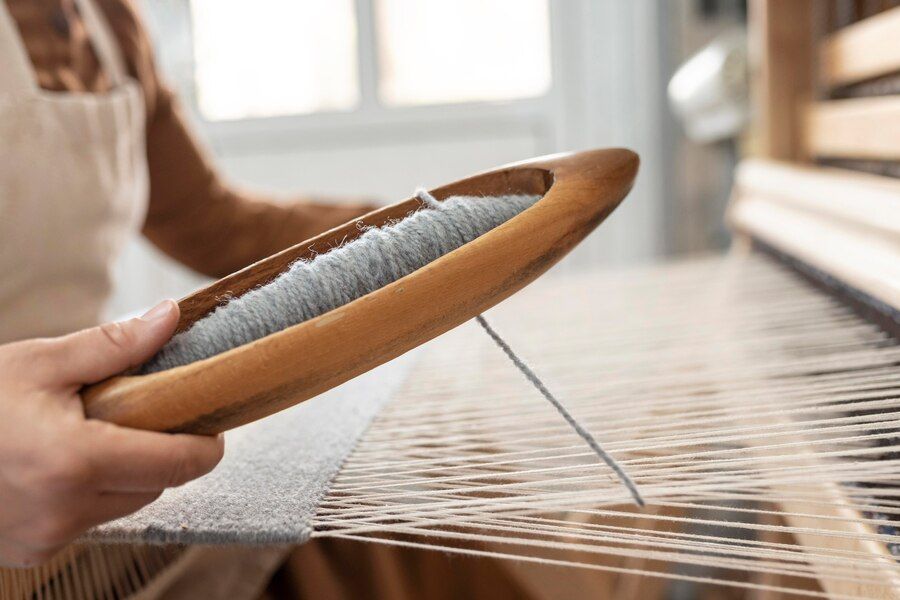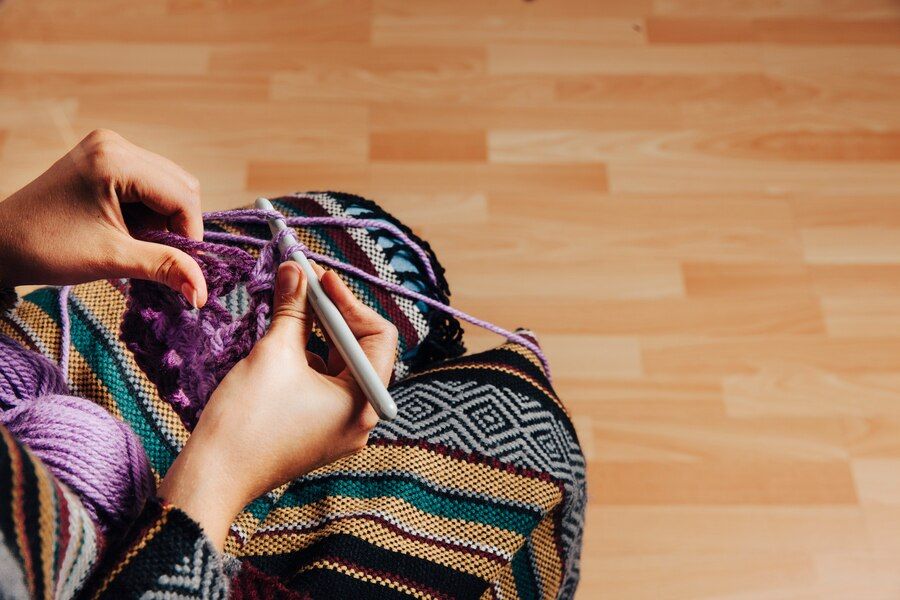
Get Latest Quotation
Woven or Knitted Fabric: Which is Better?
Step into the fascinating world of woven fabrics, where the rhythmic dance of looms creates the backbone of textiles. As we unravel the intricate patterns and applications, discover why woven fabrics, renowned for strength and versatility, dominate the realms of fashion, home decor, and industrial applications. Join us in exploring the unique characteristics of woven fabrics, their differences from knits, and the ultimate question: Woven or Knitted Fabric – which is better?
 How Are Woven Fabrics Made?
How Are Woven Fabrics Made?
The process of creating woven fabrics involves utilizing a loom, handloom, or power loom. These devices are employed to maintain tension on warp yarns while allowing for the interweaving of weft threads. The yarns utilized can be either natural, such as cotton or wool, or synthetic, like nylon or polyester. The warp thread, stored on a spool, is held under tension on the loom, while the filling thread (weft thread) is stored on a shuttle or bobbin. The actual weaving occurs as the filling thread is woven through the warp threads in various patterns, going over and under them perpendicular to their direction, ultimately creating the fabric.
Different Types of Woven Fabrics Woven
fabrics come in various types, each distinguished by its unique weave, resulting in specific textures and appearances. The four fundamental weaves are:
- Plain Weave Fabrics: This is the most common and strongest weave, created by interlacing one thread over another (1 x 1). Examples include chiffon, chintz, georgette, organza, and poplin. These fabrics find applications in garments and accessories, with options for pre-dyed or dyed yarns after weaving.
- Panama or Basket Weave Fabrics: Used for durability, this weave employs two warp and weft threads, resembling a wicker basket. Examples include canvas fabrics, Panama fabrics, and basket weave, each serving different purposes from heavy-duty applications to home fabrics and clothing items.
- Twill Weave Fabrics: Known for strength and durability, twill weave fabrics have a diagonal appearance. Variations include corduroy, denim, and gabardine, suitable for winter wear, jeans, and coats, respectively. The intricate weaving pattern makes these fabrics heavier and less prone to creasing.
- Satin or Sateen Woven Fabrics: Characterized by a shiny, luxurious appearance, satin fabrics involve passing multiple warp threads over a single weft thread (4 x 1). Fabrics like cotton satin, polyester satin, silk satin, and sateen are used for formal dresses, shirts, ties, and bedding. Despite their elegance, satin weaves can snag easily, requiring careful handling during sewing.
What is Woven Fabric Used For?
As a versatile textile created by interlacing yarns at right angles, woven fabric finds applications in a myriad of industries and everyday items. Renowned for its strength, durability, and structured appearance, woven fabric is extensively used in the fashion industry for crafting garments ranging from casual wear to formal attire. The intricate weaving process allows for the creation of diverse fabric textures, making it a favorite for upholstery and home decor items like curtains and bedding. Additionally, woven fabrics are the go-to choice for accessories such as bags and belts, combining functionality with aesthetic appeal. In industrial settings, the durability of woven fabric shines through in applications like conveyor belts and geotextiles.
 Difference Between Knit Fabric and Woven Fabric
Difference Between Knit Fabric and Woven Fabric
When it comes to textiles, the dissimilarities between knitted and woven fabrics are crucial factors influencing their characteristics and applications.
1. Construction:
- Knitted fabric is comprised of a single yarn.
- Woven fabric is crafted with multiple yarns in crisscross patterns.
2. Stretch Properties:
- Knitted fabrics stretch easily across the width and slightly lengthwise.
- Woven fabrics have limited stretch across the width but greater elasticity along the length.
3. Shape Retention:
- Knitted fabrics retain their shape after pressing.
- Woven fabrics display folds on the surface when pressed.
4. Strength and Durability:
- Woven fabric is stronger and more hard-wearing. It resists fading and shrinking after washing.
5. Applications:
- Woven fabrics are often used for durable clothing and household goods.
- Knitted fabrics, resembling fabric with a loose weave, are popular for comfortable, warm wear.
Understanding these differences enables consumers to make informed choices based on the intended use and desired characteristics of the fabric.
Woven or Knitted Fabric: Which Is Better?
Now that we've delved into the characteristics of woven and knit fabrics, it's time to weigh the pros and cons of each.
Pros of Woven Fabric
- Commonly used for fashion and formal clothing, such as blouses, dresses, shirts, and pants.
- Versatile in terms of the fibers it can be made from.
- Presents a more structured appearance.
- Tends to be more durable compared to knit fabric.
Cons of Woven Fabric
- Some types can be challenging to sew, unlike knit fabric.
- May require special finishes to prevent fraying.
- Less flexible compared to knit fabric.
Pros of Knit Fabric
- Preferred for leisure or sportswear, including t-shirts, jumpers, jogger pants, and sweat shorts.
- Can be made from a variety of fibers.
- Offers more stretch than woven fabric. - Often more comfortable to wear.
Cons of Knit Fabric
- May require special finishes to prevent fraying.
- Generally less durable than woven fabric.
- May lack the structured appearance of woven fabric.
So, which is the better choice? The answer depends on your preferences. Opt for woven fabric if you desire a textured, rigid fabric with a more petite drape. If softness and stretch are what you seek, knits might be the perfect fit for you.
Conclusion
In conclusion, this blog introduces us to the relevant knowledge of woven fabrics and the difference between knit fabric and woven fabric. The choice between woven and knit fabrics depends on preferences—woven for structured elegance and durability, knit for comfort and flexibility. Whether opting for the strength of woven or the softness of knit, the diversity of choices caters to individual needs and styles. If you want to learn more about woven fabric, come to Zhink and consulate our experts!
